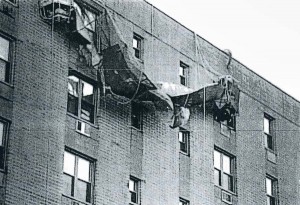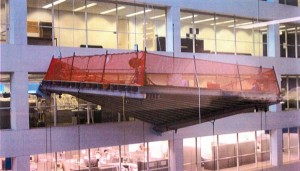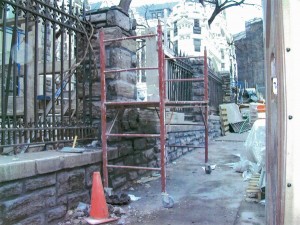Scaffolds (structurally supported or suspended) provide elevated work platforms for tasks such as construction, repair and cleaning. There are many different types of scaffolds including fixed structures (davit), mobile (rolling), suspended (swinging), motorized and others. Falls from height are one of the most significant occupational hazards, thus special care must be practiced to insure that appropriate safety systems are in place to protect scaffold users and bystanders. These include guard railings and fall protection equipment. Some scaffolds involve multiple personnel and motorized suspension systems that must be synchronized for leveling and vertical travel, while others rely on structural design to minimize instability and sway. As a result, scaffolding accidents have a wide variety of root causes. Construction codes and safety standards often dictate the manner of construction and worker protection required for a given application. With the appropriate installation, safety equipment, and user practices, work from scaffolds can be done safely; however, serious accidents can occur if adequate precautions are not taken.
Our engineers have been assisting attorneys and insurance representatives in investigating accidents since 1990. We have a highly qualified staff of engineers with advanced degrees from top-tier universities who have provided testimony on behalf of both plaintiffs and defendants at trial


